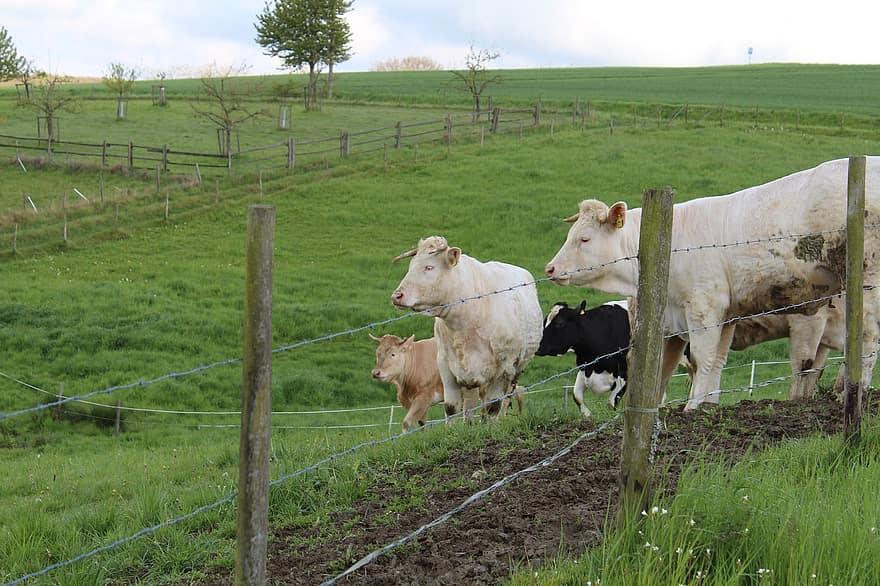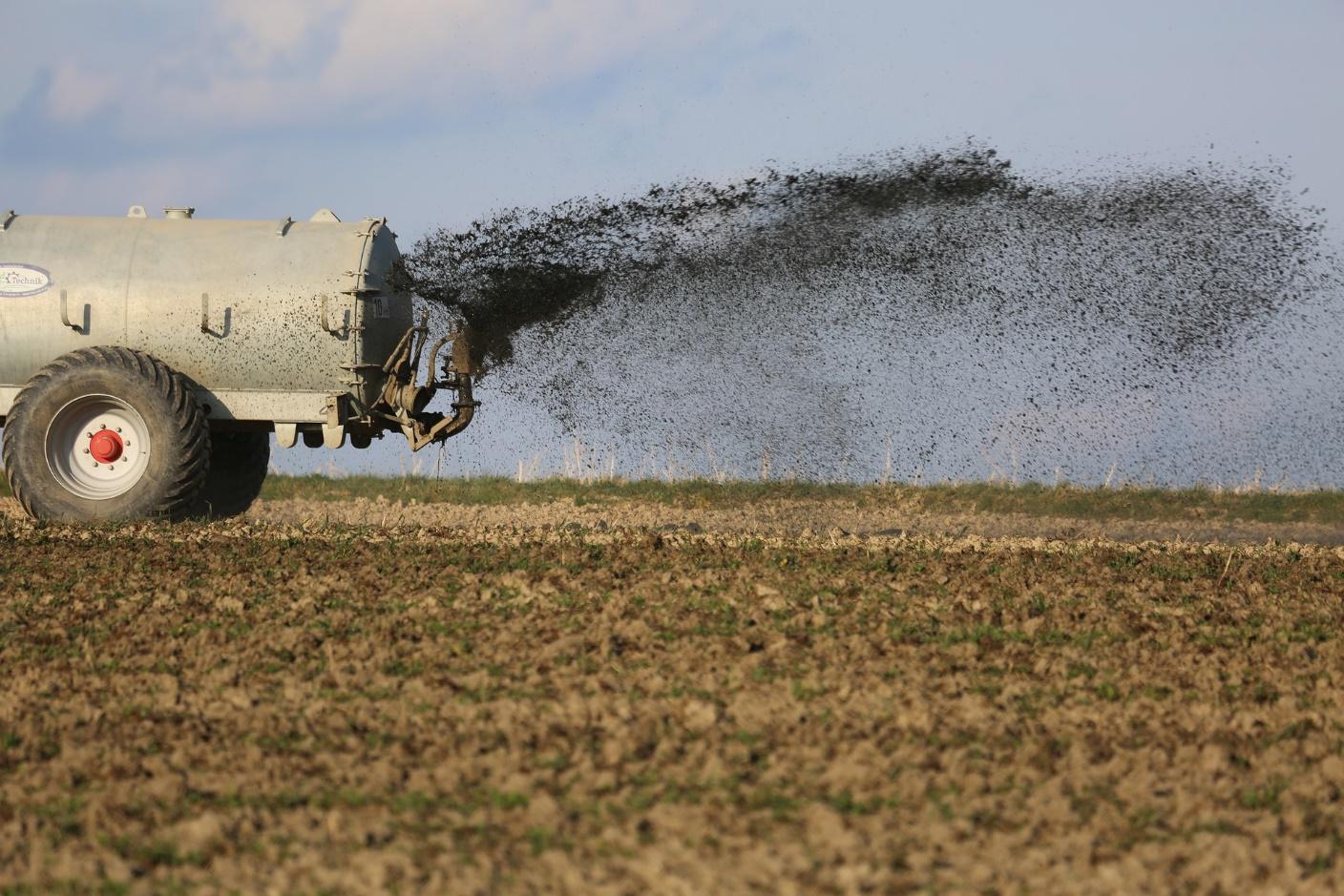You know that fences (whether temporary or permanent) play a huge role in rotational grazing. Fences cordon off parts of paddocks and ensure that livestock grazes only the bit of land that is meant to be grazed – that is, the paddock with the most bountiful pasture.
Fences are great. Temporary electric fences can be easily constructed, and cattle can be taught to respect boundaries, paddocks get adequate rest before being chewed on by hungry cattle and your rotational grazing practices are like clockwork thanks to your fences!
But did you know that fences also help improve soil fertility?
Which in turn, helps your pastures grow more abundantly, which then leads to super cows with awesome levels of productivity?
In this article, we’re going to talk all about fences and fertility.
A good fence layout can help you achieve a multitude of benefits for your farm – from boosting pasture yields to eradicating weeds and increasing the amount of soil moisture in your pastures – your fences will help you reap all these benefits and more.

When you learn how to effectively use your fences to manage your pastures, you can stop depending on all the other expensive solutions that one would usually rely on for pasture management like fertilizers, pesticides, tillage equipment or irrigation.
So once you create your fence layouts, your cattle will actually do all the work for you, and you can just sit back and relax (well, not really, but you get the picture!).
All the benefits they can supply to your pastures are natural and sustainable, unlike the other solutions that are not only expensive but have to re-applied every year at costs that shoot up.
Using electric fences can improve pasture yields
When you create an electric fence you’re creating customised paddocks for your cows that you change based on your pasture growth rates and animal needs.
I can hear you say – maybe it can improve pasture yields and production, but who’s gonna measure the paddocks, every week? Leave alone every month.
I know that this can be an UDDER pain in the wrong place. But the good news is that you don’t have to manually measure your pastures any more. A service like pasture.io can do this for you automatically and accurately, for less than 8 dollars a hectare a year.
But let’s get back to fencing! Shall we? I was saying that by having the option to create flexible paddocks based on your herbage growth, you can maximize your pasture yields and production.
Because you wouldn’t be under grazing or overgrazing your paddocks. And because you would keep your grass in its most productive growth stage, without allowing it to set seed or allow it to remain in its infancy stage.
So keeping your grass within this productive growth range will help your pasture thrive, and eventually may also decrease your spend on fertilisers and irrigation.
Tap dancing
When your cows graze one pasture slice at a time, their feet don’t compact soil in areas that see a lot of cow traffic. They interact with the soil very briefly (just imagine a bunch of cows tap-dancing on a paddock) and their sharp hooves fracture and loosen the surface of the soil.
When this happens, a lot of dead plant debris gets thrown into the topsoil layer. The microbes present in the soil slowly break it down to humus and much-needed plant nutrients.
Since this cow hooves exercise loosens compacted soils and fractures the uppermost crust of the soil, it allows moisture, earthworms and soil organisms to freely move through the soil. This helps improve soil fertility and adds to the long-term health of the soil.
Also, when the soil is loose, the roots of your plant can dive in deep into the layers of the soil to catch those nutrients. This means that your cows end up getting more nutrients on the pasture itself, than from the rear of a truck!
And guess what? The loosened soil is now much more adept at absorbing rainfall which in turn helps the pasture thrive.
So how does all this work out so well? Only because of those awesome fences that are just great and confining cattle to carefully chalked out grasslands!
So now that we talked about how the soils are so much better at storing moisture, let’s talk about fencing in riparian areas.
Managing pasture in riparian zones
Here are some pointers for managing pastures in riparian areas:
- Prevent unrestricted cattle access to these areas during rainy seasons
- Use a stable sod mat and move your fence to the edge of the water where the soil is firm enough to support the weight of the cattle
- Give your cattle access to these areas during the dry season as grazing will reduce the growth of weeds
Using your fences to reseed pastures
So you must remember that we spoke about the tap-dancing cows a little earlier. Picture this – cattle hooves trodding the grass and pushing grass seeds into the top layer of the soil so that they can germinate!
So now we’ll let you onto a little secret. You can sneakily add some grass seed to your cattle’s mineral mix. This means that your cattle will end up spreading seeds through their manure! .row

Their little tap dancing hooves will push the grass seeds into the soil and as they germinate, the manure will fertilise the seeds! Isn’t that genius? Through this means, you can also introduce brand new plant species into your pasture mix.
For instance, if you’re looking at adding some nitrogen-fixing legumes to your pasture mix, you can always add alfalfa, clover or milk vetch into the mineral mix.
This is a very natural and gradual pasture management strategy that will change your pastures over years, in a gentle way. It’s also a very inexpensive method when compared with using tillage equipment, fuel, labour and all the additional costs that pile up on each other.
Throwing in a bag of seed to a mineral feeder would set you back just a couple of dollars plus that little labour to stir the seed into the mineral mix. On the other hand, just imagine the numerous hours, not to mention dollars you would need to invest in the tillage process, seeding the pastures, irrigating and fertilizing them.
In this method, you’re also not sacrificing your present pasture yields during the process of reseeding. If you’re relying on tillage for reseeding, you know that you cannot graze the pasture during the first season after reseeding since the sod mat is too weak to bear the tap-dancing cattle!
Depending on your plant mix, it could take up to three years for newly-seeded plants to reach maximum productivity. However, when you gradually start introducing grass seeds in your cows’ mineral mixes, you never end up losing your present pasture yield.
So, rotational grazing = fences = natural reseeding = all-round awesomeness for your farm!
Studies in as far as China have proven that the long-term effects of fencing helped to increase pHvalue, soil bulk density and soil moisture. It also increased soil total nitrogen, soil organic matter, soil organic carbon, soil microbial biomass carbon and soil carbon storage.
There is also the case study in Burkina Faso, a landlocked country in West Africa, where the Ministry of Environment and Tourism used live fences to protect their lands from deforestation and soil erosion.
It all boils down to this – soil isn’t a living organism. It’s not an ecosystem either. It’s a constantly and continuously growing medium, the lifeblood of your pastures and should be treated as one.
Density is an important variable in fencing. Not the number of animals but the size of the paddock grazed combined with timely practices that will help improve the soil health considerably by distributing manure and urine throughout the grasslands.
Understand how the cow and soil microbe are connected – that’s the key to cracking the code!
For more reading, check out what we are adding to in the category on farm land management here.
Until we meet again, Happy Farming!
- The Dedicated Team of Pasture.io, 2020-10-12